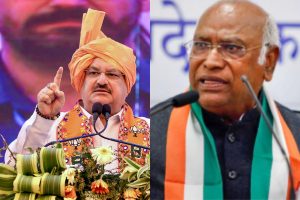Alcohol, which was in the news recently when liquor shops reopened after a gap, has been central to human existence since ancient times. The Egyptians indulged in wine making and the Greeks had a deity for wine – Dionysus. Old ethnic groups had their own sacred drinks. The Mayans had their Balche’ and the Voodoo religion, its Clairin. Special herb-infused drinks were used to cure anything from sore throats to back aches.
The significance of spirits has not lessened over the ages. As curious youngsters we pleaded with our parents to allow us to have one sip from their glass of liquor. More often than not, when teenagers did get to have that first sip, it was a disappointing anti-climax. Most would screw up their noses in disgust and feel cheated. Thus we became acquainted with the meaning of the phrase ‘it is an acquired taste’.
I ventured beyond a sip, to my very own first glass, when I joined medical college. In a celebratory mood on my birthday, we went to dine and drink at a local restaurant. One friend kept me company and the other girl declined saying someone had to look after the first two! Apart from sampling it, we students learnt about alcohol and its effects in our pharmacology class. A pharmacology textbook authored by Lawrence gave one of the most memorable charts depicting the effects of alcohol through a series of funny drawings.
I can still recall the property of ‘easy distractibility’ depicted by a car driver driving with his face turned sideways, looking at a lady on the pavement even while a pole looms in front . Or of ‘over cautiousness’– where our friend in the car simply refuses to overtake a slow animaldrawn cart. Shakespeare too has painted a vivid picture of the effects of drink in his play Macbeth. A character notes that it provokes ‘nose painting’, ‘sleep’ and ‘urine’.
The nose painting likely alludes to a facial flushing seen in some who have a greater sensitivity to the effects of alcohol. During our medical education we learnt how alcohol induces poor motor coordination, impaired judgment and drowsiness. Regular alcohol consumption is causally related to several medical conditions such as hypertension, vitamin B12 deficiency, hand tremors, liver cirrhosis, and pancreatitis among a long list.
Some of these can be attributed to increased cortisol (the stress hormone) levels in the blood. In Forensic medicine, we learnt about how crude alcohol containing methanol caused acute swelling of the optic nerve and induced the sudden blindness we would read about in the papers after spurious liquor had been consumed.
We discovered that there are two main categories of alcohols here – local country liquors like Arrack, Tharra, Daru etc. and the Indian made foreign liquors (whisky, rum and such – apart from the directly imported foreign) and of course illegally fabricated drinks which could be anything! Much later during post graduation we learnt of the effects of alcohol on the eyes such as possible accelerated age related macular changes, and changes to the nerve–tobacco and alcohol related amblyopias.
Alcohol is a substance which can induce addiction. Signs of chronic alcohol dependency, as distinct from its repeated abuse (which may have social, medical, or judicial consequences) are many (eleven criteria in the DSM book) and include: increased tolerance to alcohol (greater quantity required to achieve the same effect), impaired control over drinking and drinking despite adverse effects relating to work, relationships or health.
A reformed alcohol addict from a deaddiction centre was invited to our college to speak and discourage students from travelling down the path of addiction. He narrated his story in a lively manner, using English words matching the proficiency of an Oxford don. The most important word of course was ‘sobriety’. We students also gained a firsthand account of alcohol abuse from one of our bais (house- keeper) in the hostel.
She worked very hard to nurture and educate her family, but was often waylaid by her unemployed husband who made off with her salary to buy alcohol and frequently ended up drunk. Later, as interns, we attended to victims of road traffic accidents brought on by the excesses of alcohol. Apart from enhanced recklessness, alcohol seemed to bring on a flood of emotions as well. I vividly remember how copiously some of them would weep if we scolded them about drunk driving, after tending to their wounds.
A recent study in The Journal of Clinical and Diagnostic Research ( July 2015) tells us that of 200 drivers in a hospital in northwestern India who reported to the trauma emergency services, 54 per cent had medical evidence of substance abuse and in 40 per cent of cases the substance was alcohol. Our army life found us with easy access to liquor. Some traditions included alcohol as part of the proceedings – such as drinking beer with the junior commissioned officers (JCOs) on Holi or newly promoted officers drinking from a chalice filled with alcohol into which their brand new pips had earlier been submerged.
Being able to hold one’s drink was considered a coveted ability. The associations continued in civil life. We enjoyed Urdu poetry where wine has always been an important topic. A gamut of emotions was linked to wine drinking – it was a refuge from unrequited love, it induced euphoria, and sometimes a welcome oblivion. Bars were described as extremely inclusive spaces. A memorable evening of Sufi music left an indelible imprint on my young mind.
One of the song couplets which received thunderous applause from the audience translated as “People construct houses of worship… then set about excluding folks from them. Hindus are declared infidels at mosques. Muslims are declared infidels at temples. It is suggested that instead of building these houses of worship, build liquor bars (maikhanas) as they are the most inclusive places. At these, even infidels are not considered infidels.”
Poetry clearly extolled the virtues of drinking. Real life was a different story. Our work with the gender and social aspects of medicine helped us become more aware of the widespread impact of alcohol on domestic violence. Many studies linking alcohol to intimate partner violence are reported in wellrespected journals which publish on alcoholism, family, psychology and interpersonal violence.
A study by Carol Cunradi et al in 2009 of over 800 male and female industrial workers in the Journal of Family violence, reiterated this association between drinking and intimate partner violence for both male and female workers and additionally highlighted that male unemployment played a significant role as well.
Fast forward to recent news pertaining to alcohol – we saw long lines waiting to buy alcohol, largely without distancing or police supervision. The stated aim was to revive the economy through the sale of liquor. This however, is a moot point. Is this the ideal time to open liquor shops? Should economic revival be based on encouraging a habit which could later lead to addiction? A heavy drinker tends to suffer from poor nutrition and vitamin deficiencies.
Added to this is the current spike in unemployment, relative starvation of many, and domestic violence at a high peak .Is it not the need of the hour to operate with caution and safeguards when introducing another element, that is alcohol – into this potent brew of uncertainties prevailing during this Corona pandemic?
(The writer is a Delhi-based medical practitioner)












